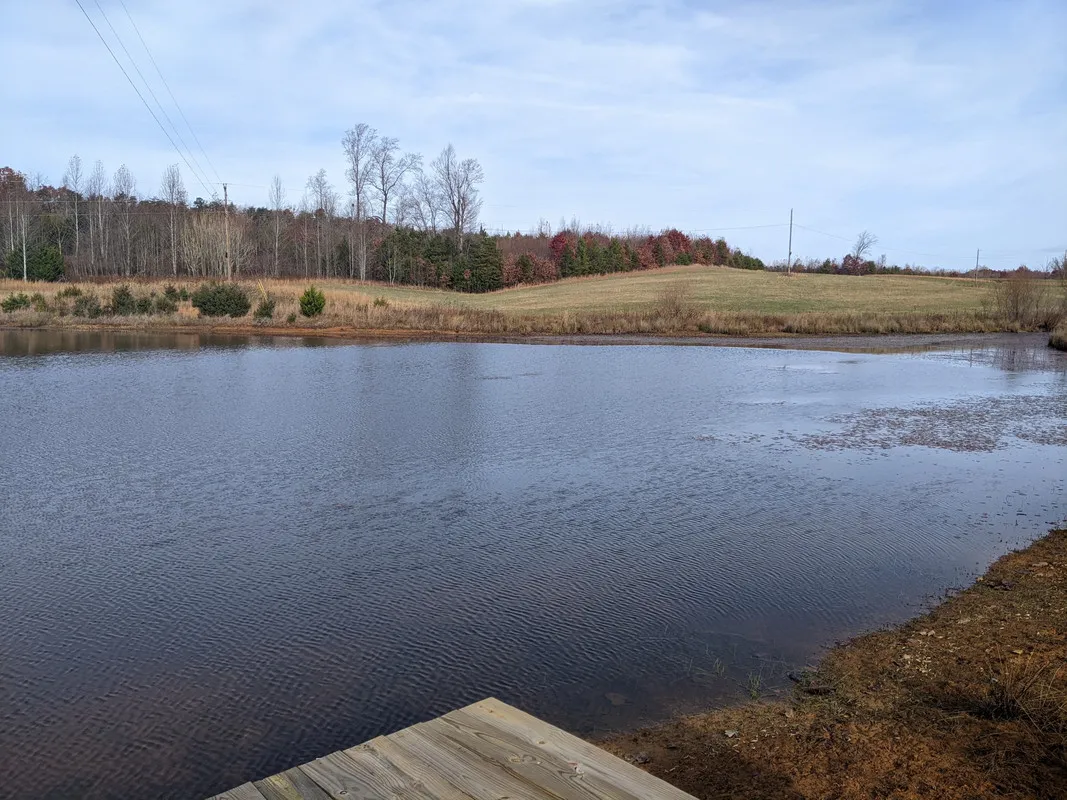
I have really enjoyed the views on the pond, the wildlife that visits it. Seeing fish jump out of the water, birds fishing, a buck swimming through the pond chasing does. The lily pads that grow on the pond and flower. And how the fog rises off of it sometimes, its all quite nice. Just observing it has been fun.. Though I have been curious about the health of the pond, such as the water chemistry. Really curious how this pond looks on paper when it comes to its results, I am pretty sure the previous owners did not condition the pond at all so it will be interesting to see what I find.

Learning about pond testing is a rabbit hole I went down while looking into stocking my pond with more fish. They suggest you test you pond before introducing any more fish into a pond. There are kits available that can give you a geneal idea of resources inside the water taken from the pond.
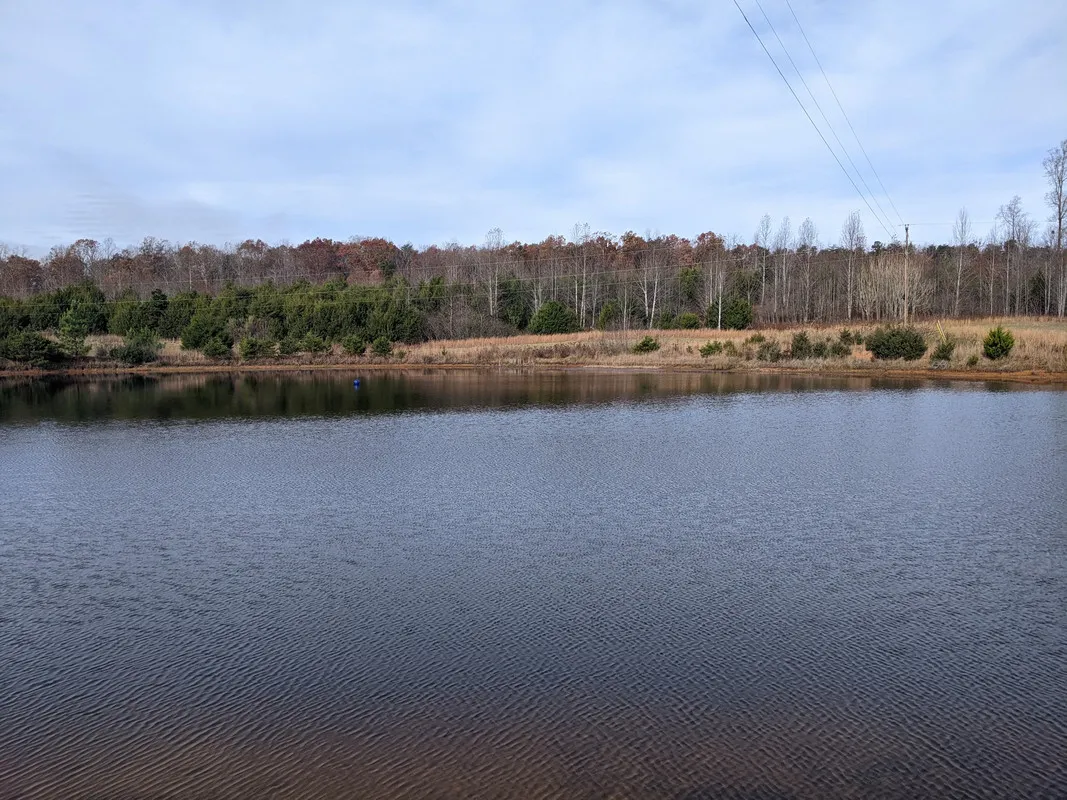
From what I have read, there are a few important values you want to find out about your pond if you are interested in stocking more fish.. Or just improving the health of the pond for other native fish and aquatic life. Otherwise algae can dominate a pond and choke out everything else.
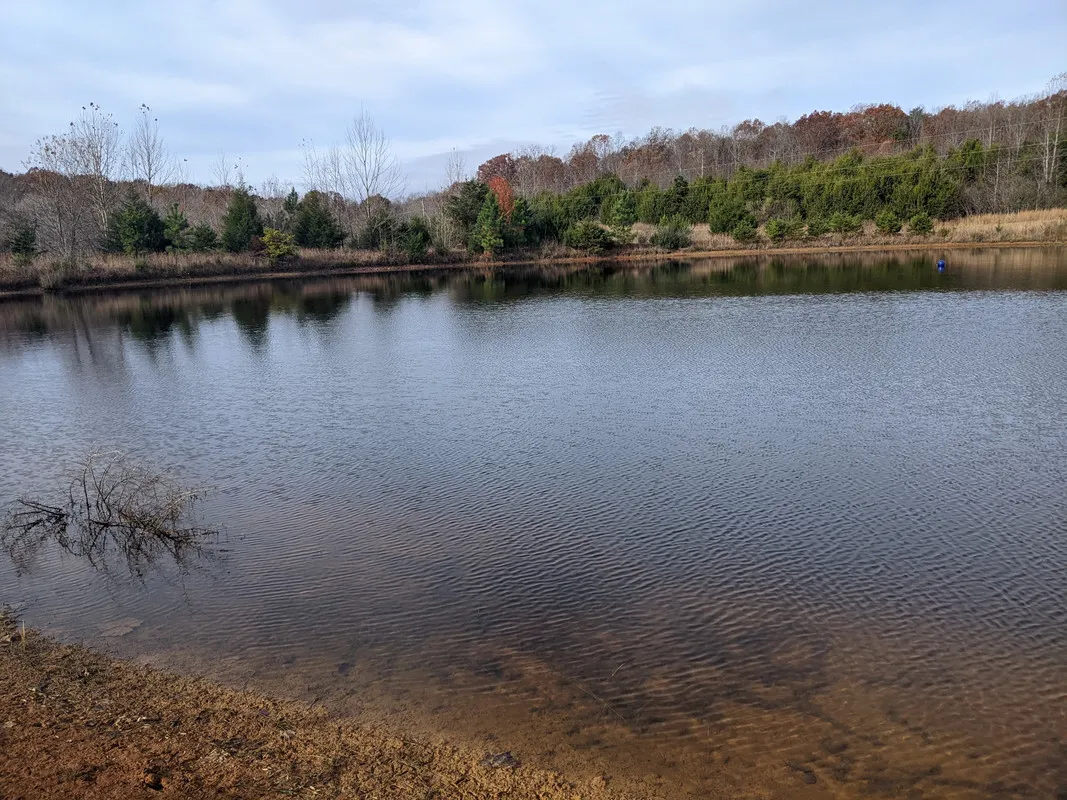
I learned that the PH can swing throughout the day from more acid to more alkaline depending on if it is sunset of not. The organisms in the water produce CO2 at night and that can change the water chemistry. That is my basic understanding of it. With wild PH swings fish and other aquatic wild life suffer and may not grow as big.. or at all. There is a way to “buffer” this PH swing, and this test I am going to do will tell is how well the pond is naturally buffering the PH. Making it less hard on the wildlife inside the pond.
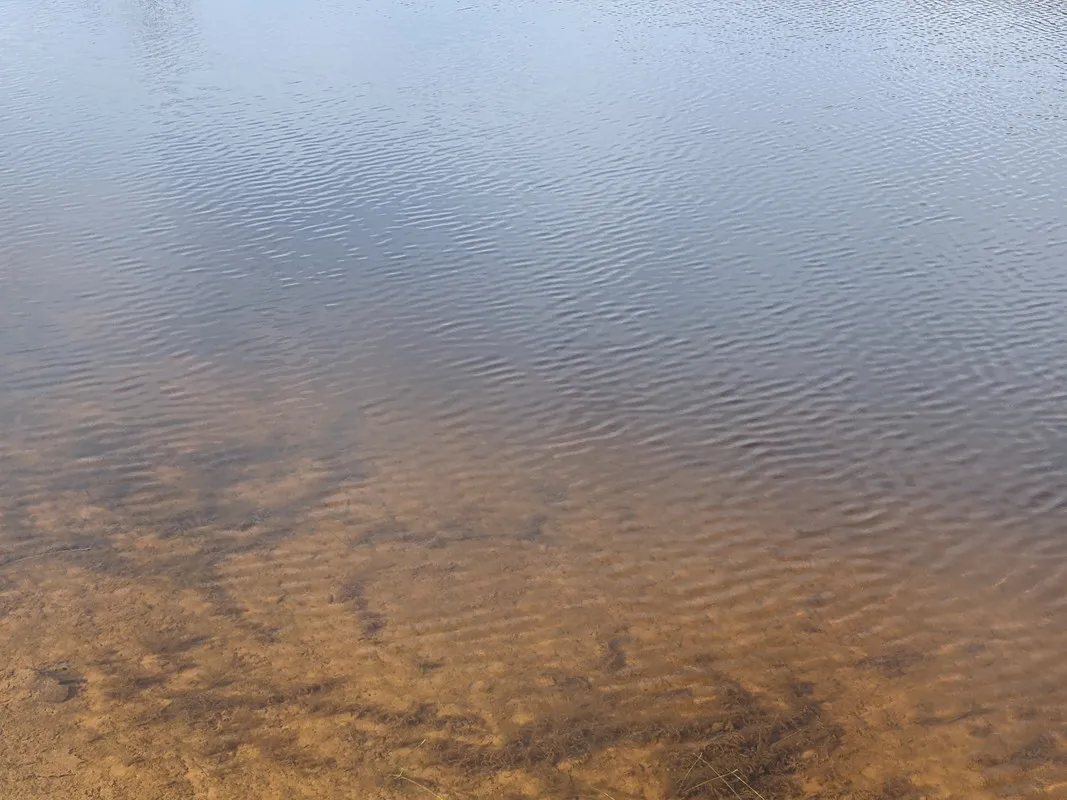
So it is time to test the pond and find out some of its stats.
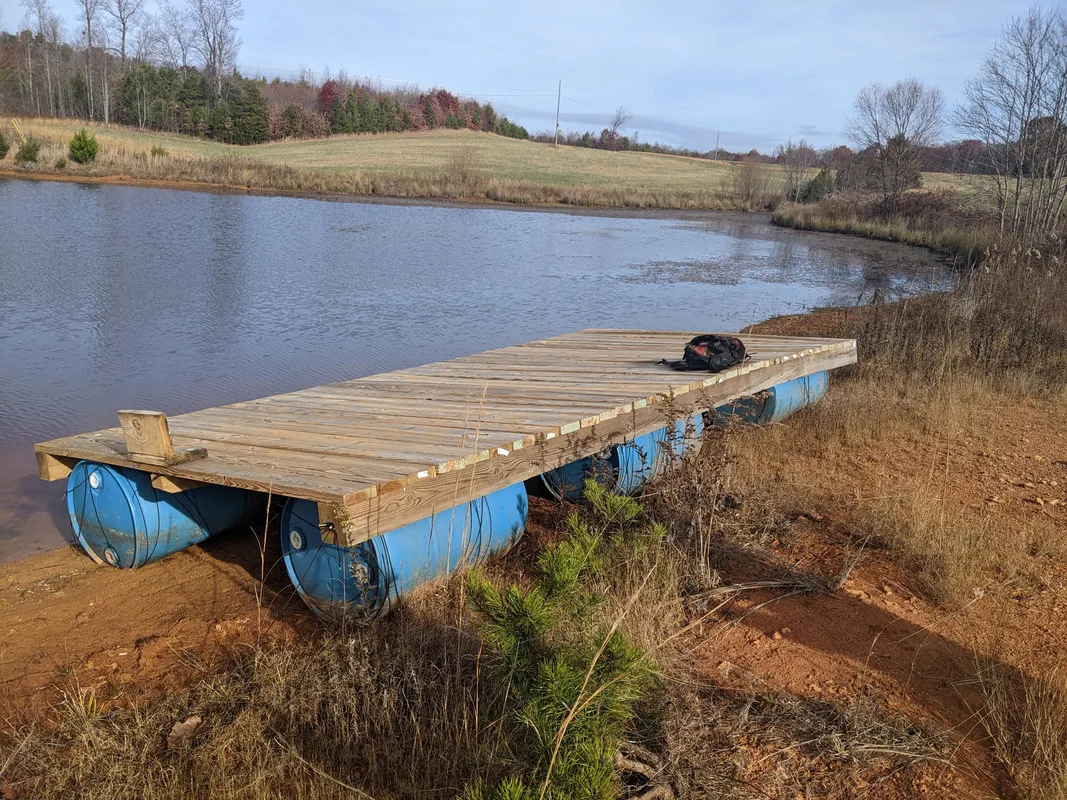
Using my barge, I lean over and put the test strip in the water for about 2 seconds. Then hold it horizontally for about a minute while it drips away the water.
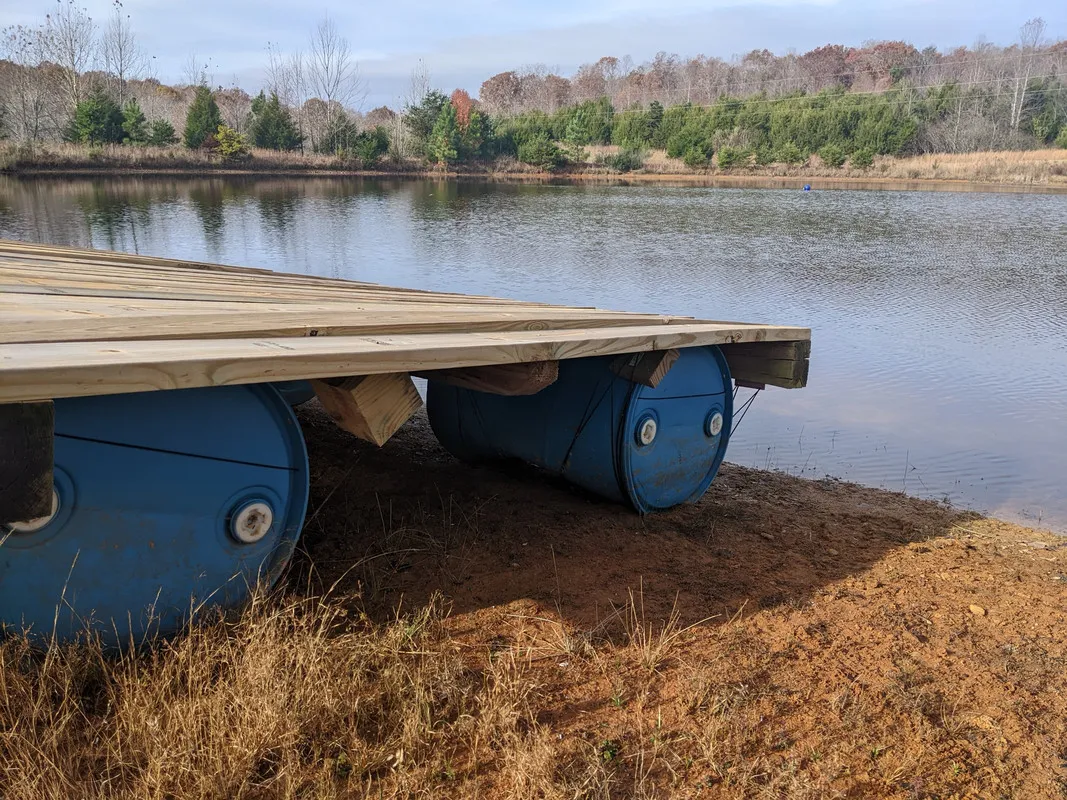
The barge used to be floating freely in the water, but the ponds water level seems to go down during the winter and then rises in the summer. Its quite obvious of this seeing the barge completely on land.
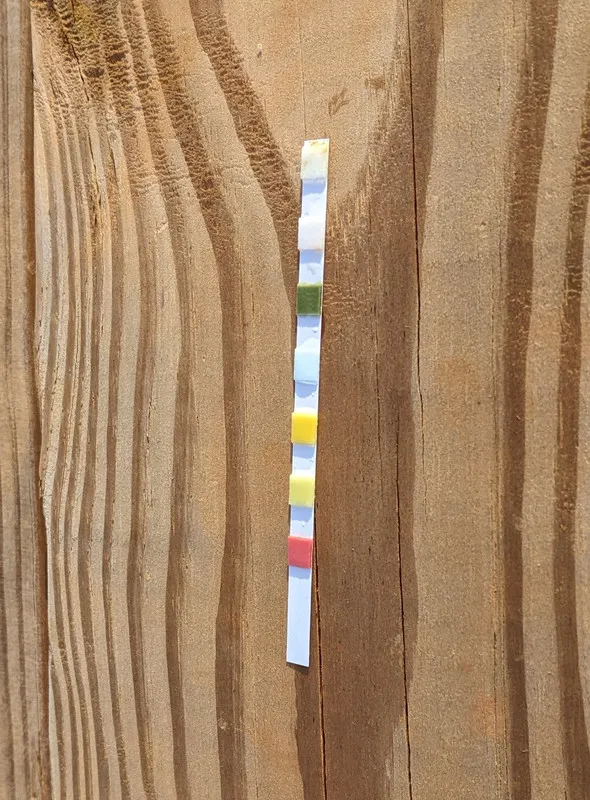
Test results from edge of pond.
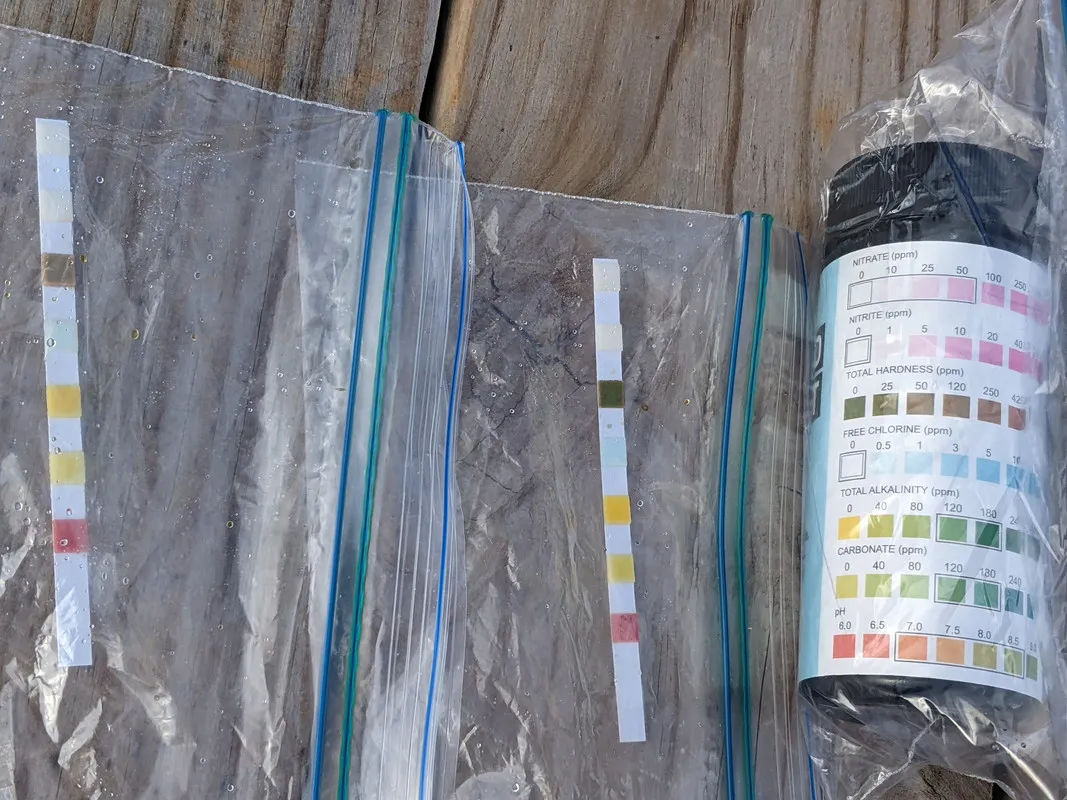
The results from testing the center of the pond
Showed very similar, chlorine seems lower toward the center. I guess it naturally occurs as its not something I add to my pond.
The results:
We can tell if my results are within acceptable values based on looking at the bottle and the highlighted ranges that are optimal for freshwater fish and aquatic life.
Nitrate: Looks like its near zero, this is good. High levels seem to cause over growth of algae among other problems.
Total hardness: Looks like this is close to zero as well, which is not good. You want this as high as possible as it helps the wildlife deal with the changing PH during the day/night cycle. This is known as the “buffer”.
Free Chlorine: Low to near zero, which is good. I do not add any chlorine to my pond that makes sense its low, though it can be naturally occurring as well so its possible to have trace amounts of it.
Total alkalinity: Low to near zero, this is bad. This stat is affected by how the carbonates in the water are affecting the alkalinity of the water.
Carbonate: Zero, which is bad. This gives you an idea of how many carbonates are in the water, this can be in the form of lime or wood ash. Along with other things that contain calcium. Adding these can raise the hardness, alkalinity and the carbonate level.
PH: Below 6, which is bad. Depending on the fish, the PH needs to be at a certain range. Otherwise the fish will not be big, or even live at all in a pond. So dialing this in, using lime or wood ash can help. I need to get it up to a 7 or above.
Looking at the seven values on this test strip it appears there is much room for improvement, just like with my soil testing I find I may need to add minerals to balance out the nutrients.
Good to see the nitrate and chlorine levels low, something I do not need to worry about. But the PH, hardness, total alkalinity and carbonate levels need to be improved.
Ways this can be done is acquiring agricultural powdered limestone and adding it to the pond. This adds carbonates to the water that helps raise the alkalinity of the pond and acts as a buffer during the PH swings between day and night.
Another form of conditioning a pond is through wood ash. Just as I use it for my fields to increase alkalinity and phosphorus levels. I can use it in a pond to raise its alkalinity as well and the presences of carbonates in the ash does the same thing as the lime. Wood ash is faster acting as its water soluble unlike powdered limestone that can take many months to fully breakdown in the water.
At the moment all my wood ash is going to my fields until I can get the right levels I want. And then I may start adding it to the pond to see if that starts to help improve the water chemistry as well. The amount of wood ash added to ponds is much less than fields, so I will not need as much. But I want to be very careful and not over do it. So adding small amounts at a time would be wise. Until I can reach the desired levels. I am sure these test strips are far from perfect, so it may be worth finding a lab or county office to test the water too. I am sure I would learn something from the results so its probably a good idea to see about getting it tested through a lab as well.
But eventually getting this pond dialed in means I can stock it with fish if I wanted to. Dialing in the PH and other levels to exactly the kind of fish I would want in there. Also the clarity of the pond will be increased if there is an overgrowth of algae occurring. Balancing out the PH and alkalinity will stop that or greatly reduce it making the water more clear.
Posted using STEMGeeks
